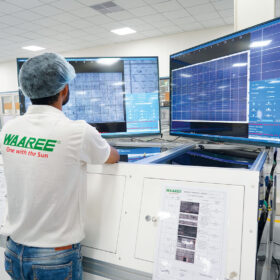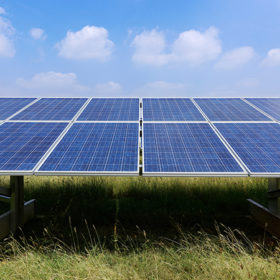India’s steel industry has been the backbone of its industrial growth story which is supporting growth of infrastructure, manufacturing and construction. But, while we are focussing on the good we have completely sidelined that it is one of the largest sources of carbon emissions.
Now the world is moving towards net-zero and the industry is facing a big question: how do you decarbonize one of the most energy-intensive processes known to man?
The answer is pointing towards green hydrogen. It is a clean and renewable alternative that has potential to change how steel is made, traded and valued.
The Steel Industry’s Carbon Challenge
Steel production contributes the most to carbon heavy industrial processes. Globally, it contributes 8% of total CO₂ emissions and in India it accounts for around 12% of the national emissions. This is happening majorly due to dependence on coal for both as a fuel and in traditional blast furnaces.
For decades, the blast furnace–basic oxygen furnace (BF–BOF) route has been the standard. It’s efficient, scalable, and deeply embedded in industrial infrastructure. But it’s also carbon-intensive by design. Each tonne of crude steel emits roughly 2.55 tonnes of CO₂, significantly higher than the global average of 1.85.
With increasing global scrutiny particularly from trade mechanisms like the EU’s Carbon Border Adjustment Mechanism (CBAM), this model is no longer sustainable, economically or environmentally. The future of steel will depend on how fast and effectively it can decouple growth from emissions.
Enter Green Hydrogen
Green hydrogen is produced by splitting water through renewable-powered electrolysis. When it is used in steel making, it can easily replace carbon as the reducing agent which will convert iron ore into metallic iron without emitting CO₂.
This process is called hydrogen based direct reduction of iron (H-DRI), generating only water vapor as a by-product. When coupled with renewable electricity, it becomes one of the cleanest possible pathways for primary steel production.
Many studies suggest that hydrogen based steelmaking can reduce existing emissions up to 90% and this is making it one of the most lucrative solutions for deep industrial decarbonization.
India’s Strategic Advantage
India is positioned to pave the way ahead as we have abundant solar and wind resources, low renewable tariffs and strong policies to follow the National Green Hydrogen Mission (NGHM). India has both the resources and the motivation to take green hydrogen to the next level in comparison to many of its global peers.
The NGHM is motivated to produce 5 million tonnes of green hydrogen annually by 2030, along with creating the needed infrastructure, export corridors and much more.
Many industry leaders such as Jindal Stainless, JSW Steel, Tata Steel and many more are running pilot projects to integrate hydrogen in direct reduction and blast furnaces operations. Not only this, Jindal Stainless has commissioned India’s first green hydrogen plant for the stainless steel sector in Hisar, expected to cut 2,700 tonnes of CO₂ annually.
These efforts also shed light on how green hydrogen is a reality in steel making and no more just another experiment and this is the beginning of industrial transformation.
The Economics of Transition
For green hydrogen to transform the Indian steel industry, it should also make economic sense. At present, the production costs are around USD 3-6 per kg and making hydrogen based steel is extremely expensive than conventional methods. However, the cost curve will fall rapidly as analysts predict that with scale and more technological innovation and policy incentives the price will drop to USD 1-2 per kg by the year 2030.
And when this happens, carbon intensive steel will be fine with heavy penalties, while zero emissions and low-emission steel will gain momentum, regulatory advantage and market advantage as well. The CBAM alone will drive this revaluation globally which would favour our country as we will invest in decarbonized production before everyone else. So, right now this looks like an environmental necessity but tomorrow this could become an economic opportunity.
Challenges on the Road Ahead
The transition from hydrogen based steelmaking is not going to be simple and it will require more than just technological adoption, it demands complete rethinking of industrial systems, supply chains and policies.
While hydrogen based direct reduction is proven at pilot scale, integrating it into India’s current scale requires new investments, safety systems and major skill development. We also need large scale storage, distribution pipelines and hydrogen logistics are also underdeveloped. Without these, adoption will be limited to isolated pilot projects and nothing else. For hydrogen to be truly “green,” electrolysis must be powered by renewable energy. This requires continuous access to low-cost renewable power which is not yet a universal reality.
And we also need to focus on market readiness, the demand for green steel is still emerging. There also needs to be a certification, pricing and procurement is essential to incentivize manufacturers.
The solutions will come from collaboration across energy producers, steelmakers, policymakers, and technology start-ups working toward a shared goal: decarbonized growth.
From Incremental Change to Industrial Revolution
What makes green hydrogen revolutionary is not just its chemistry but its impact. It completely refines the value chain of steel making, from mining to energy to logistics and manufacturing. Hydrogen based steelmaking will reshape energy demand by connecting renewable power generation directly into industrial consumption.
Technology ecosystems will also change as the development of f electrolysers, fuel cells, and hydrogen-ready furnaces will accelerate. Not only this trade patterns and workforce capabilities will also be reshaped. In a nutshell, it is the beginning of a new industrial era where competitiveness is not defined by just cost and scale but by carbon efficiency and innovation.
A Defining Decade for Indian Steel
The next decade will determine whether India becomes a global leader in green steel or a follower in a carbon-constrained market. The early signs are promising such as policy momentum, corporate intent, and technological readiness are aligning.
But speed will matter. Every tonne of steel produced today with coal locks in emissions for decades. Transitioning even part of India’s steel capacity to green hydrogen by 2030 could avoid millions of tonnes of CO₂ and position the country as a preferred supplier in global low-carbon value chains.
The question is no longer whether green hydrogen will transform steel, it’s how fast and how decisively India moves to make that transformation a competitive advantage.
Conclusion
Green hydrogen is not just an energy alternative, it’s an industrial revolution in motion. For India’s steel industry, it offers a chance to rewrite the script: from being one of the largest emitters to becoming a global model for sustainable growth.
If executed with intent, innovation, and collaboration, green hydrogen could make India the epicenter of the world’s green steel economy, changing not just how steel is made, but how progress itself is measured.
The views and opinions expressed in this article are the author’s own, and do not necessarily reflect those held by pv magazine.
This content is protected by copyright and may not be reused. If you want to cooperate with us and would like to reuse some of our content, please contact: editors@pv-magazine.com.








By submitting this form you agree to pv magazine using your data for the purposes of publishing your comment.
Your personal data will only be disclosed or otherwise transmitted to third parties for the purposes of spam filtering or if this is necessary for technical maintenance of the website. Any other transfer to third parties will not take place unless this is justified on the basis of applicable data protection regulations or if pv magazine is legally obliged to do so.
You may revoke this consent at any time with effect for the future, in which case your personal data will be deleted immediately. Otherwise, your data will be deleted if pv magazine has processed your request or the purpose of data storage is fulfilled.
Further information on data privacy can be found in our Data Protection Policy.